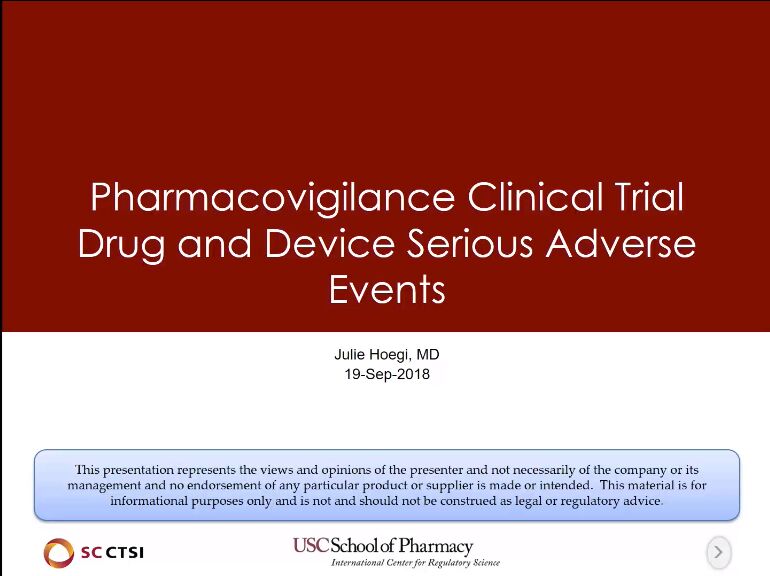- Collection of Adverse Events (AEs)
- Adverse Event vs Reaction
- Who determines AE vs Reaction?
- Serious Adverse Event (SAE) Reporting Decision Tree
- Who makes SAE assessments?
- Seriousness
- Severity
- Related vs Unrelated - Sponsor
- Expected vs Unexpected - Sponsor
- Analysis of Similar Events - Sponsor
- Sponsor Medical Comment
- Reporting: 7-day alert
- Reporting: 15-day alert
- Reporting: Unblinding/Unmasking
- 21 CFR 803.3 - Definitions
- 803.12
- 803.53 - Manufacturer: 5-day report
- 21 CFR 803.50(a) MDR: 30-day report
- 21 CFR 820.198(a)(3) Complaints: Evaluate for Medical Device Reporting
- 21 CFR 803.3 - Who reports?
- Exercise-1: Clinical Trial Adverse Event
The case study gives a practical view of SAE reporting – right from how it is to be done, duration and also the kind of terms to be used in the form.
Regulatory Science Symposium: Pharmacovigilance and Safety Reporting Session 5: Safety Reporting in Industry-Sponsored Trials and Case Studies - Part 1 (2018)
In this series, we will discuss pharmacovigilance and safety reporting in clinical trials. Case studies are presented throughout the series.
Course Syllabus/Topics
Acknowledgement
Accompanying text created by Khyati Ashtekar | Graduate Student, Regulatory Science, USC School of Pharmacy | ashtekar@usc.edu

